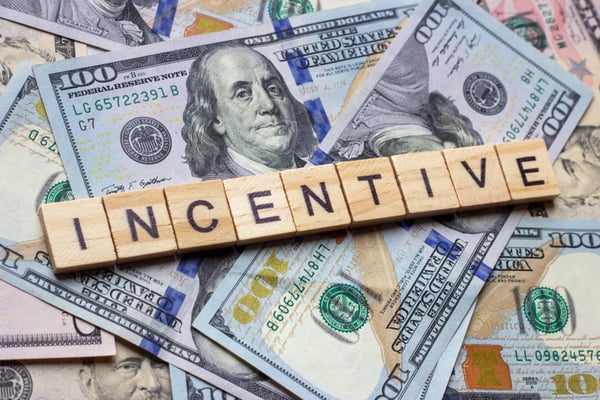The Psychology of Performance Incentives
What works best for motivating sales teams? The short answer is, of course, it depends on the team — and each of its members. Motivation can be a tricky puzzle for employers to solve, but with genuine interest, careful planning, and thoughtful implementation, you can resolve the challenges of motivation with an effective incentive program.
Motivation at work
There are as many different motivation methods as there are people, but all motivation falls into one of two categories. Intrinsic motivation is the inspiration to complete a task because it is personally rewarding. Whether it’s finishing a novel, doing exceptionally well on an assignment, or turning in work ahead of schedule, personal satisfaction keeps people motivated to continue performing at the standards they set for themselves. Extrinsic motivation is the impetus to perform tasks for an external reason, either to earn a reward or avoid a negative consequence.
Intrinsic motivation is a vital piece of the motivation puzzle for team leaders. When employees are intrinsically motivated, they feel competent, find their work meaningful, and remain invested in performing well. Intrinsically motivated sales representatives can discern their own progress and continue to actively develop in both skill and confidence, but extrinsic motivation also plays a key role in the workplace. Extrinsic rewards, including bonuses, commissions, prizes, and recognition give managers a way to promote interest in more difficult or less fulfilling work. Employees are people first, and people enjoy recognition for a job well done.

Incentive compensation
Incentive compensation is an extrinsic motivator of critical concern for companies, candidates, and employees. Incentive programs come with some risk, including — but not limited to — temporary compliance rather than long-term achievement, loss of efficacy over time, the perception of manipulation, discord among team members, and increased scrutiny from regulatory bodies and/or HR stakeholders. But foresight and comprehensive risk management can ensure the appropriate use of extrinsic incentives.
When organizations develop strategies to address compensation plan risk, in the short and long term, it is easier to align compensation incentives with the company’s risk profile, design internal controls to mitigate excessive risk, ensure incentives serve their purpose, and meet internal and external regulatory requirements.
Companies can ensure plan efficacy by reassessing incentive compensation plans regularly. Consider these three questions at each assessment:
- Does your company’s incentive compensation program need development or modification? Create both short- and long-term incentive plans to supplement your company’s established compensation program. An approach oriented for risk management helps your company achieve balance with salaries complemented by a thoroughly considered incentive plan.
- Are incentive plans clear and well implemented? Any plan that changes a worker’s compensation affects one of the most personal and important aspects of their employment. For a compensation plan to be successful, every participant must understand the terms and conditions of their incentive package. As always, clarity and communication are vital. Make sure employees have enough time and space to learn about the program, ask questions, and clarify any confusion.
- Is plan performance in line with expectations? Include both qualitative and quantitative methods to measure incentive plan performance against your expectations. Deviations can be more closely examined for development and/or modification.

Key concepts and steps
An effective incentive program is characterized by good motivators and a solid presentation. To improve the odds of program success, leaders should be clear about what motivates their employees, develop a comprehensive framework, and communicate it well. A successful incentive program must immediately be recognized as engaging, friendly, achievable, fair, and even fun to your employees. Effective incentive structures can include:
- Sales commissions. Sales representatives expect incentive plans. Typically, plans incentivize a certain number of sales during a particular calendar period or by recurring deadlines. Goals are set for sales numbers, and incentives increase with increased sales. Tracking involves both employee performance metrics and the profitability of paying out commissions.
- Profit sharing. Profit sharing incentives work something like commissions. With the goal of increasing company profit for everyone’s benefit, these incentives boost employee loyalty and teamwork. For this type of incentive, the company may track each individual’s contribution to company success by measuring work hours, client engagement, or similar metrics.
- Production bonuses. In warehouse and manufacturing jobs, organizations may offer team members bonuses for meeting production goals. Managers may set individual or team goals, or both. Tracking can consist of how much each member contributes to goal achievement or the team’s overall performance.
Effective incentive programs bring company and employee goals into alignment and make meeting them a winning prospect for everyone involved.
A comprehensive sales compensation management solution (SCMS) helps your company track incentive plan success and keeps employee plan details accessible, transparent, and secure. Request an SCMS demo at SalesVista today.
Share this
You May Also Like
These Related Stories

How SalesVista's SCMS Individualizes Comp Plans for Maximum Motivation

Top 3 Features to Look for in a Sales Compensation Management Solution
